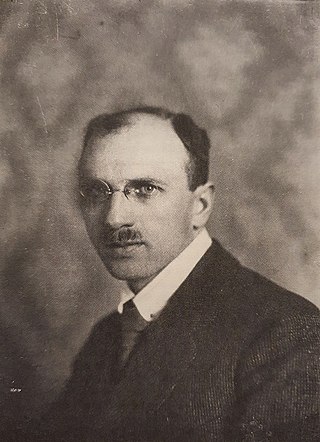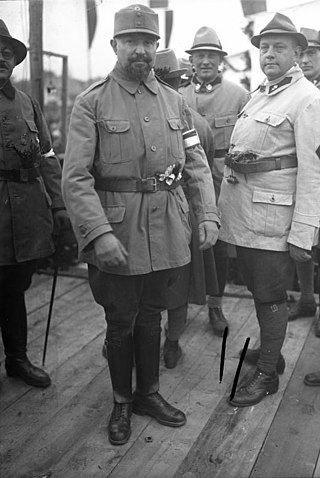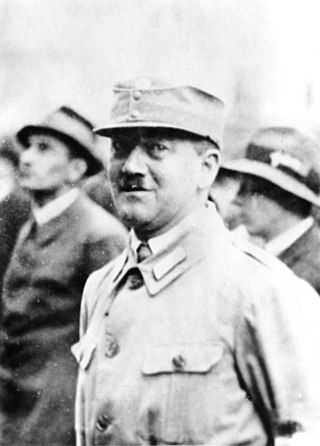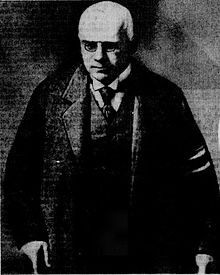Neo-fascism is a post-World War II far-right ideology that includes significant elements of fascism. Neo-fascism usually includes ultranationalism, racial supremacy, populism, authoritarianism, nativism, xenophobia, and anti-immigration sentiment, as well as opposition to liberal democracy, social democracy, parliamentarianism, liberalism, Marxism, neoliberalism, communism, and socialism. As with classical fascism, it proposes a Third Position as an alternative to market capitalism.
The Heimwehr or Heimatschutz was a nationalist, initially paramilitary group operating in Austria during the 1920s and 1930s that was similar in methods, organization, and ideology to the Freikorps in Germany. It was opposed to parliamentary democracy, socialism and Marxism. Some of its regional groups also opposed Nazism while others favored it. In spite of its anti-democratic stance, the Heimwehr developed a political wing called the Heimatblock that was close to the conservative Christian Social Party and took part in both the cabinet of Chancellor Carl Vaugoin in 1930 and in Engelbert Dollfuss' right-wing government from 1932 to 1934. In 1936 the Heimwehr was absorbed into what was at the time the only legally permitted political party in Austria, the Fatherland Front, and then later into the Frontmiliz, an amalgamation of militia units that in 1937 became part of Austria's armed forces.

Ignaz Seipel was an Austrian prelate, Catholic theologian and politician of the Christian Social Party. He was its chairman from 1921 to 1930 and served as Austria's federal chancellor twice, from 1922 to 1924 and 1926 to 1929. Seipel's terms in office saw the reorganization of the state's finances and passage of the 1929 amendment to the federal constitution that strengthened the role of the Austrian President. As chancellor he opposed the Social Democratic Party of Austria and Austromarxism and supported paramilitary militias such as the Heimwehr, an organization similar to the German Freikorps.
Paramilitary groups were formed throughout the Weimar Republic in the wake of Imperial Germany's defeat in World War I and the ensuing German Revolution. Some were created by political parties to help in recruiting, discipline and in preparation for seizing power. Some were created before World War I. Others were formed by individuals after the war and were called "Freikorps". The party affiliated groups and others were all outside government control, but the Freikorps units were under government control, supply and pay.
These are terms, concepts and ideas that are useful to understanding the political situation in the Weimar Republic. Some are particular to the period and government, while others were just in common usage but have a bearing on the Weimar milieu and political maneuvering.

The Biographical Dictionary of the Extreme Right Since 1890 is a reference book by Philip Rees, on leading people in the various far right movements since 1890. It contains entries for what the author regards as "the 500 major figures on the radical right, extreme right, and revolutionary right from 1890 to the present" . It was published, as a 418-page hardcover, in New York by Simon & Schuster in 1990 (ISBN 0-13-089301-3).

Ernst Niekisch was a German writer and politician. Initially a member of the Social Democratic Party (SPD), he later became a prominent exponent of National Bolshevism.
The British People's Party (BPP) was a British far-right political party founded in 1939 and led by ex-British Union of Fascists (BUF) member and Labour Party Member of Parliament John Beckett.

The Fatherland Front was the right-wing conservative, nationalist and corporatist ruling political organisation of the Federal State of Austria. It claimed to be a nonpartisan movement, and aimed to unite all the people of Austria, overcoming political and social divisions. Established on 20 May 1933 by Christian Social Chancellor Engelbert Dollfuss as the only legally permitted party in the country, it was organised along the lines of Italian Fascism, except that the Fatherland Front was fully aligned with the Catholic Church and did not advocate any racial ideology, as later Italian Fascism did. It advocated Austrian nationalism and independence from Germany on the basis of protecting Austria's Catholic religious identity from what they considered a Protestant-dominated German state.
Dr. Walter Riehl was an Austrian lawyer and politician who was an early exponent of Austrian National Socialism. Belonging to the wing of that ideology that favoured links between Germany and an independent Austria, he lost influence as the drive for Anschluss grew within both Austrian National Socialism and German Nazism.

Franz Langoth was an Austrian nationalist politician who later became a leading figure in the country's Nazi movement.
Anton Rintelen was an Austrian academic, jurist and politician. Initially associated with the right wing Christian Social Party, he later became involved in a Nazi coup d'état plot.

Walter Pfrimer was an Austrian politician and leader of the Heimwehr in Styria. He was the leader of a failed putsch in 1931.

Richard Steidle was an Austrian lawyer and the leader of the paramilitary Heimwehr in Tyrol. He was a leading representative of the pro-independence tendency on the far right of Austrian politics and as such was opposed to the Nazi Party which supported the incorporation of Austria into a Großdeutschland.

Ernst Julius Waldemar Pabst was a German soldier and political activist, involved in right-wing and anti-communist activity in both his homeland and Austria. As a serving officer Pabst gained notoriety for ordering the executions of Karl Liebknecht and Rosa Luxemburg in 1919 as well as for his leading role in the coterie of right-wing conspirators around Wolfgang Kapp. In Austria he played a central part in organising rightist militia groups before being deported due to his activities. Pabst subsequently faded from public life in Nazi Germany as he was never more than loosely associated with the Nazis.
Hermann Hiltl, also Hermann Ritter von Hiltl was an Austrian army officer who became leader of his own right wing militia, the Frontkämpfervereinigung, after the First World War. He embraced both fascism and Pan-Germanism without fully committing to Nazism.
Rudolf Kanzler was a German surveyor and politician who was involved in the organisation of Freikorps units after World War I.

Prince Ernst Rüdiger Camillo von Starhemberg, often known simply as Prince Starhemberg, was an Austrian nationalist and politician who helped introduce austrofascism and install a clerical fascist dictatorship in Austria in the interwar period. A fierce opponent of Anschluss, he fled Austria when the Nazis invaded the country and briefly served with the Free French and British forces in World War II.
The Einwohnerwehr, or "Citizens' Defense," also called the Civil Guard or Civil Defense, was a far-right paramilitary in Weimar Germany that existed in violation of the Treaty of Versailles from the German Revolution of 1918-19 until June 29, 1921. It was established with the goal of defending Germany against Communist uprisings and foreign attacks, though it was also hostile to the Weimar Republic. It was based in Bavaria, where anti-Berlin and anti-republican sentiment attracted such activity. On June 29, 1921, the German government gave in to Allied demands and dissolved the Citizens' Defense. Its militants moved on to fight in other far-right paramilitaries with similar goals.









